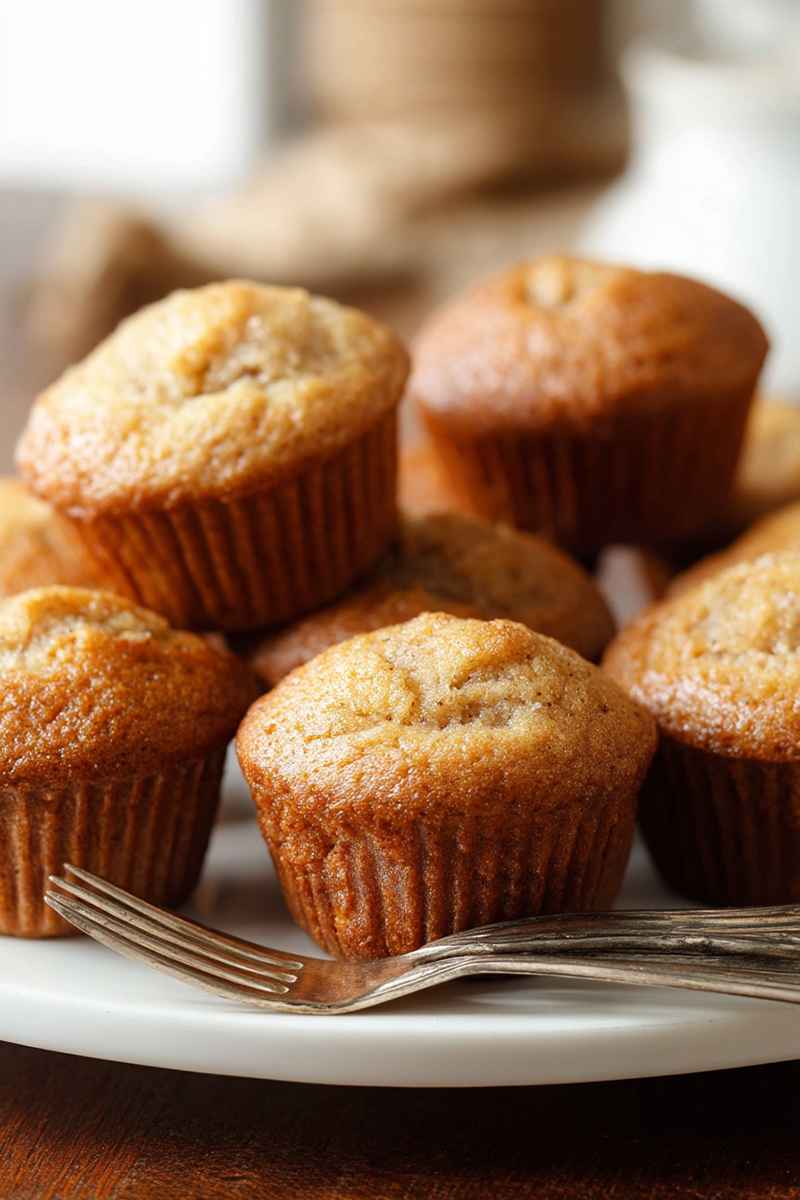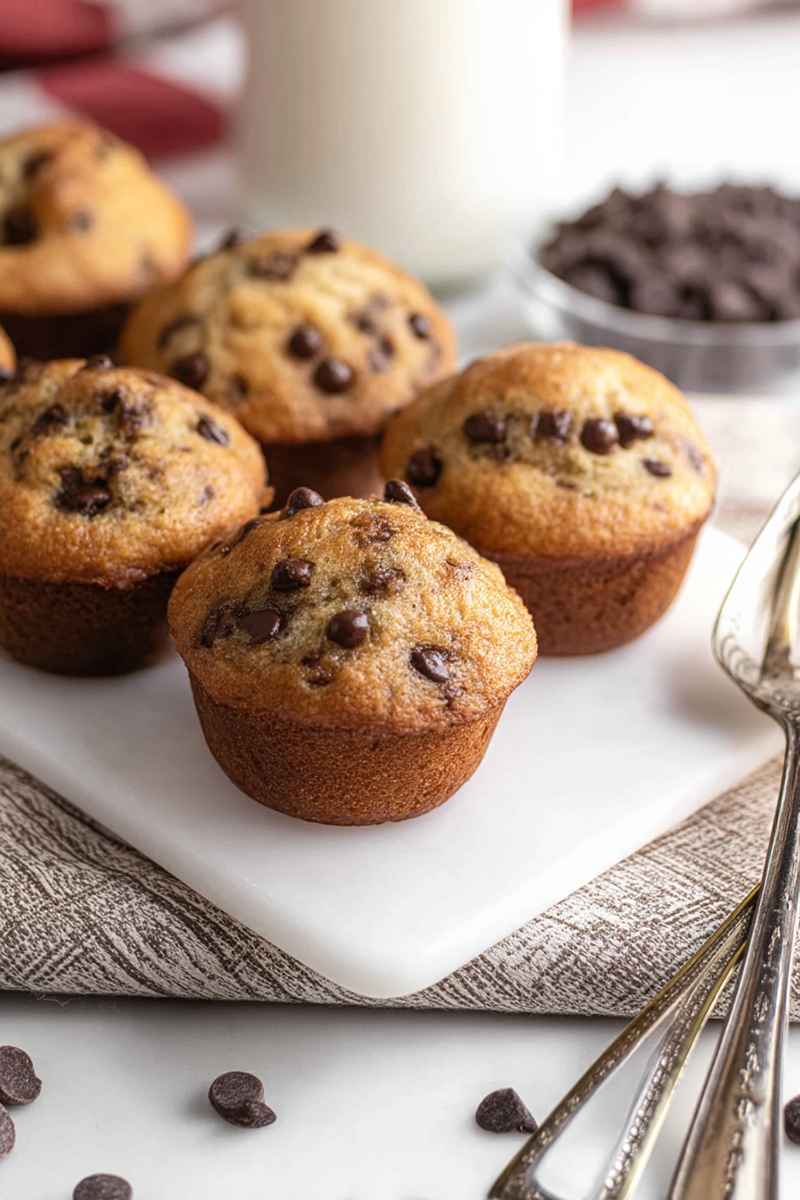You are about to discover the most versatile muffin recipe you will ever need, yielding delightfully fluffy and moist treats perfect for countless flavor adventures. This simple base allows you to create any kind of muffin your heart desires right in your own kitchen. Get ready to whip up bakery-worthy results that are perfect for breakfast, snacks, or sharing with loved ones.
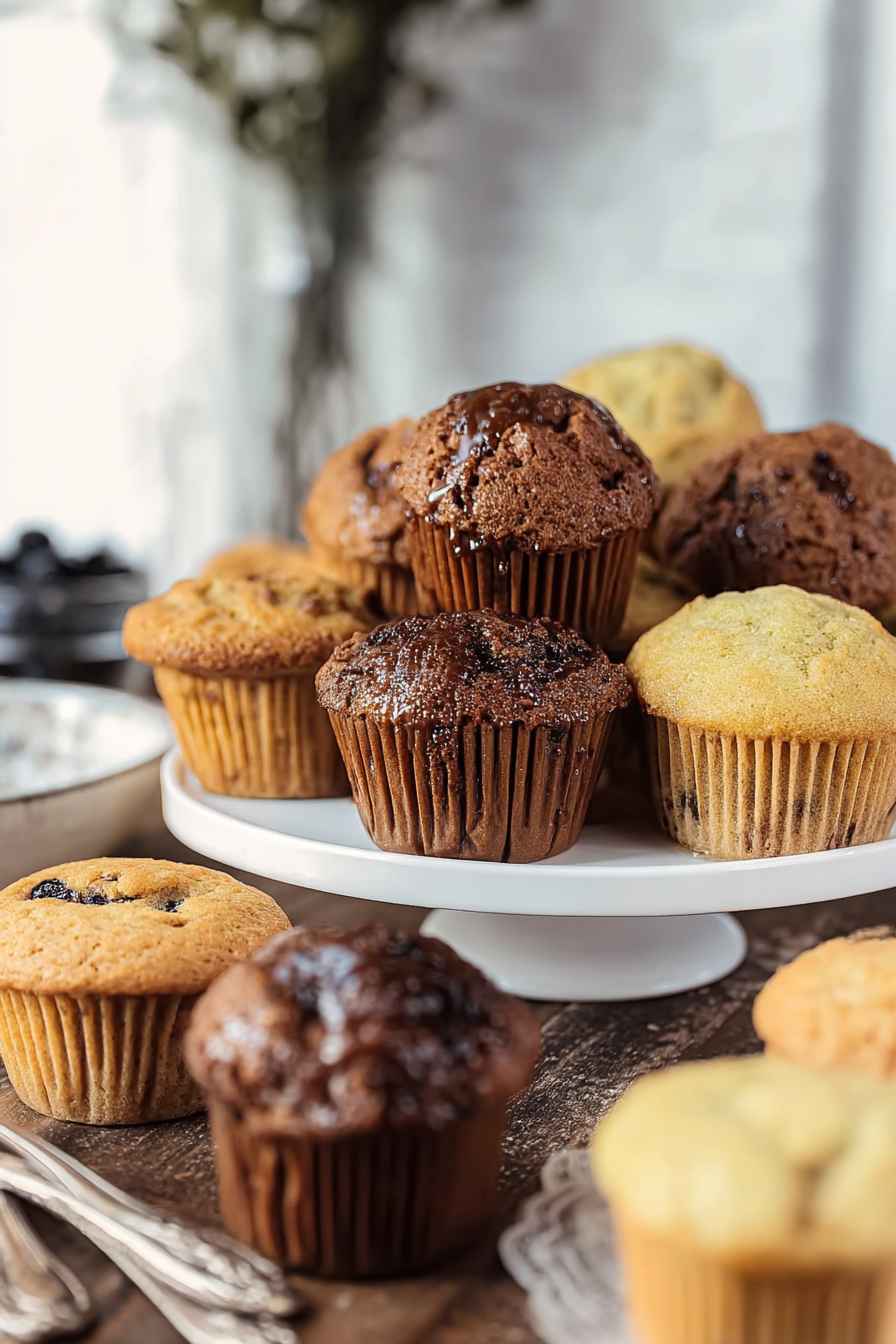
Why This Recipe Is Your New Best Friend
This isn’t just any muffin recipe. It’s designed to be the ultimate starting point, giving you freedom and fantastic results every time.
- One Base, Infinite Creations: Think of this as your blank canvas. You can stir in endless combinations of ingredients, extracts, and toppings to achieve any muffin flavor imaginable.
- The Secret to a Sky-High Rise: Starting with a burst of heat in the oven helps the batter lift beautifully, creating that coveted domed top and a wonderfully soft texture inside.
- Simple Ingredients, Amazing Muffins: You likely have everything you need in your pantry right now. This recipe relies on common staples to deliver delicious homemade goodness effortlessly.
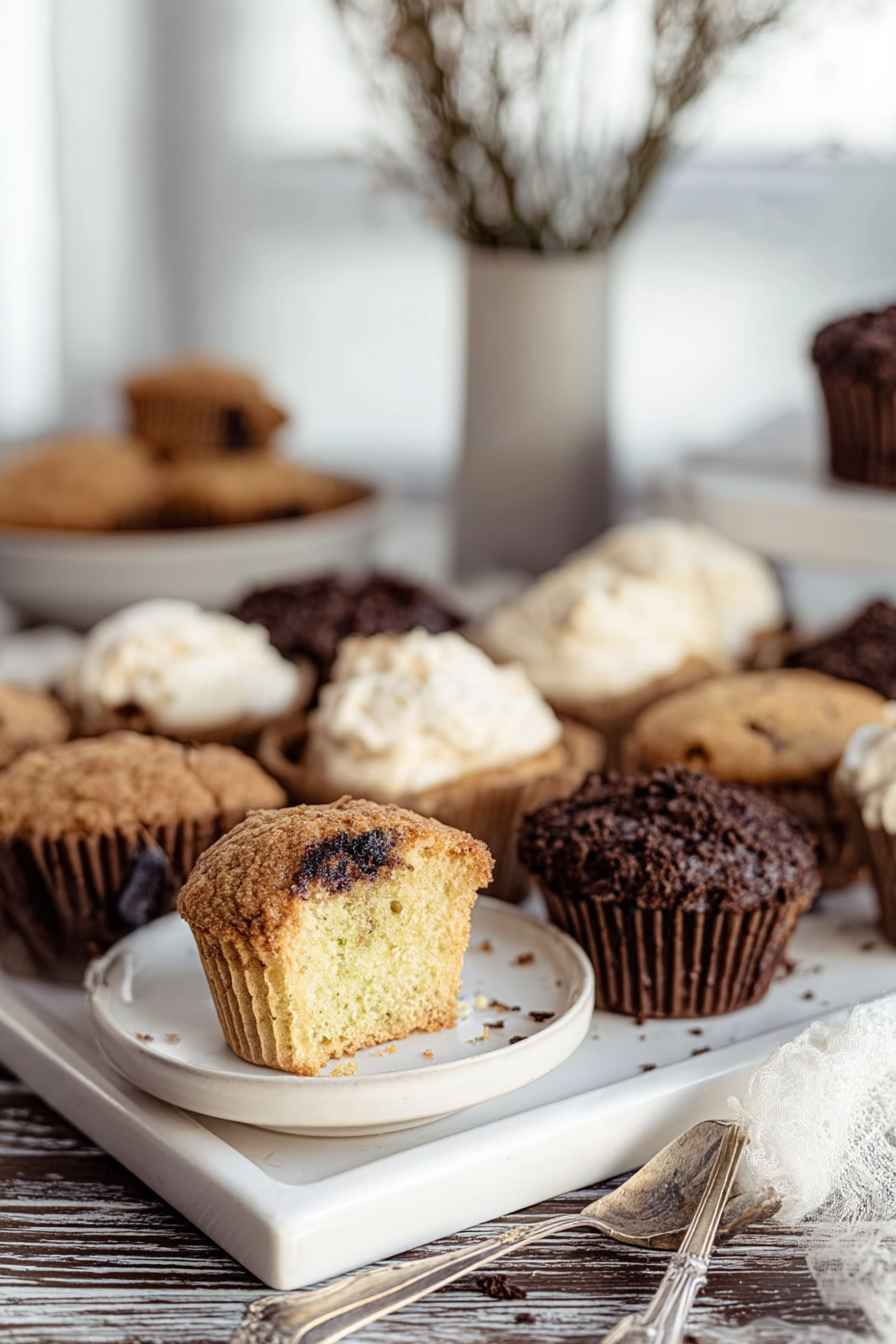
Your Muffin Adventure Awaits
Imagine a stack of warm, freshly baked muffins ready for breakfast or a coffee break. Whether you’re dreaming of classic fruit-filled goodness, rich chocolate indulgence, or something zesty and bright, this fundamental recipe provides the perfect foundation. Armed with just a few everyday kitchen items, you’re well on your way to baking up a batch of truly satisfying muffins at home.
Understanding Your Ingredients
Using the right ingredients and preparing them properly makes all the difference in achieving that perfect muffin texture. Here is a little detail on what makes each component important in this master mix.
- Butter: I prefer using unsalted butter here. This gives you more precise control over the overall saltiness of your muffins. If you only have salted butter, that is okay too, but your muffins might taste slightly less sweet. Make certain your butter is truly soft before you begin mixing. This helps it cream smoothly with the sugar, creating tiny air pockets for lift.
- Granulated Sugar: White granulated sugar works perfectly. For a slightly deeper flavor with hints of caramel, you can absolutely substitute it with brown sugar in the same measured amount.
- Eggs: Large, grade AA eggs are the standard for baking. If you find yourself without eggs or need a substitute, you can try using a quarter cup of unsweetened applesauce or mashed ripe banana for each egg called for in the recipe.
- Baking Powder: This is your primary leavening agent, responsible for making your muffins rise tall and light. Please check the date on your baking powder before you start. It really does lose its power over time.
- Salt: Simple table salt is all you need. Don’t skip it. Salt doesn’t just add saltiness, it enhances all the other flavors in your muffin batter, making them taste richer and more balanced.
- Vanilla Extract: This adds a lovely warmth and depth of flavor. The beauty of this master recipe is how easily you can change the flavor profile by swapping vanilla for other extracts. Consider almond extract or lemon extract for a delightful twist.
- All Purpose Flour: This recipe is designed for standard all purpose flour, which gives the ideal crumb texture. Using bread flour will work but will result in a noticeably chewier muffin. Substituting with whole wheat flour is possible, but expect a denser finished product.
- Milk or Buttermilk: Regular milk provides moisture. Buttermilk adds extra tenderness and a subtle tangy note that complements many flavors. If you need a dairy free option, feel free to use your favorite non dairy milk substitute. No buttermilk on hand? You can quickly make your own by stirring 1 tablespoon of lemon juice or white vinegar into a half cup of regular milk. Let it sit for about five minutes until it looks slightly curdled.
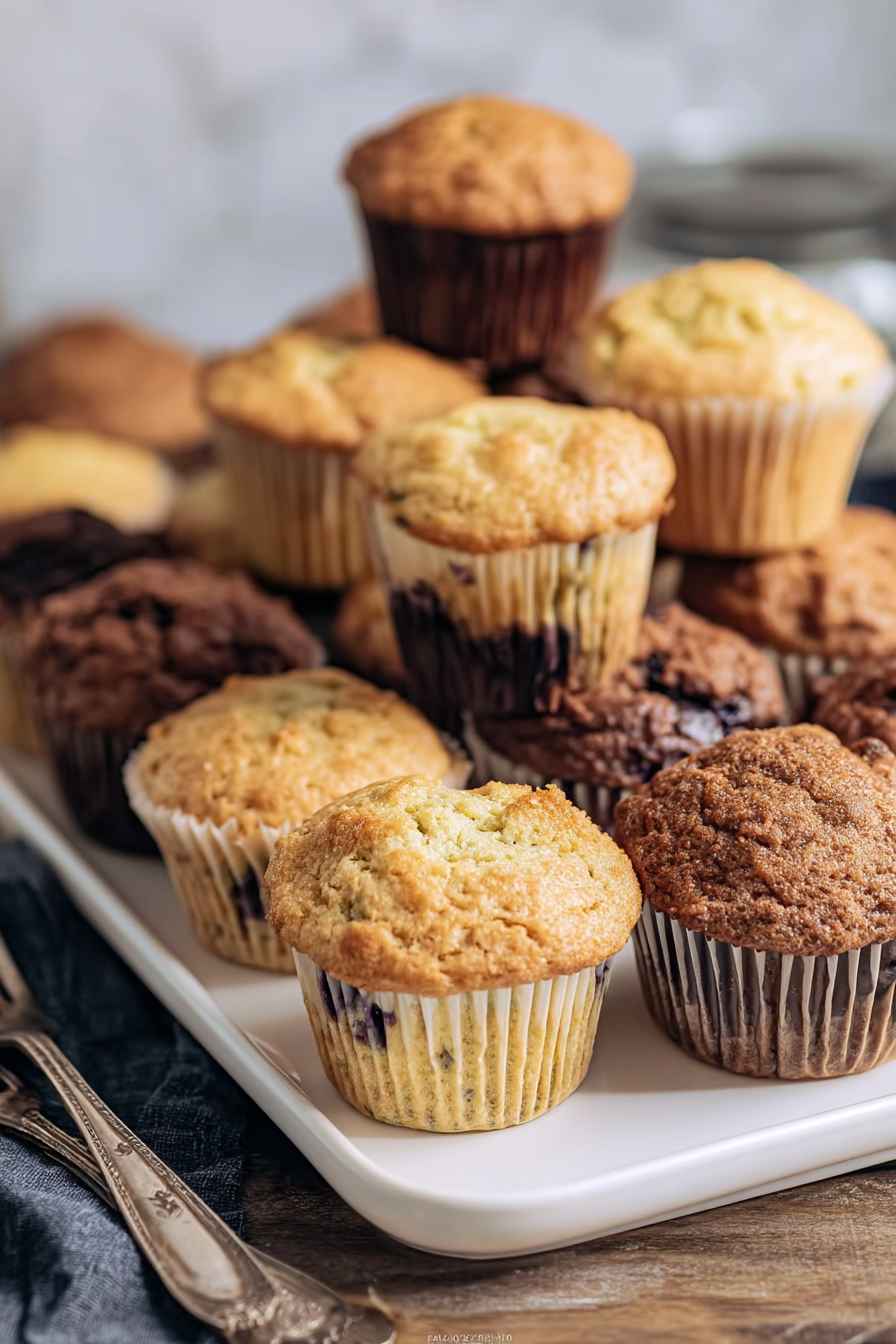
Wonderful Add-Ins and Flavor Twists
Now comes the really fun part. Customizing your muffins is easy with this adaptable base. You can mix and match your favorite ingredients. Just be sure the total amount of added ingredients doesn’t exceed one cup to keep the batter balanced.
- Chocolate Chips: Classic and always a hit. Use milk chocolate, semi sweet, white chocolate, or even those cute mini chips.
- Cinnamon Chips: These are a seasonal favorite, often found in the fall and winter. They are absolutely heavenly for creating spiced muffins like cinnamon or pumpkin variations.
- Fresh or Frozen Berries: Juicy blueberries, sweet raspberries, or chopped strawberries are fantastic choices. You don’t even need to thaw frozen berries first. For a simple trick to help berries stay suspended in the batter and not sink to the bottom, gently toss them in a little bit of flour before you fold them in.
- Fresh Fruit: Finely diced fruits such as apples, bananas, peaches, or pears work beautifully. If you’re adding fresh fruit, remove one tablespoon of the liquid (milk) from the recipe for every cup of fruit you include. This helps prevent the batter from becoming too wet.
- Dried Fruit: Raisins, cranberries, chopped apricots, or dates offer a concentrated burst of fruit flavor and a pleasant chewy texture.
- Chopped Nuts: Adding chopped nuts like pecans, walnuts, almonds, pistachios, or macadamia nuts provides a lovely crunch. Make sure they are finely chopped. You might find that adding only a half cup of nuts is perfect to avoid your muffins being overly crunchy.
- Shredded Coconut: For a touch of tropical flavor, stir in sweetened or unsweetened coconut flakes. Similar to nuts, you might prefer to limit the coconut flakes to a half cup.
- Seeds: You can add poppy seeds, chia seeds, or even sunflower seeds. Aim for up to three tablespoons total.
- Citrus Zest: To infuse your muffins with bright, citrusy flavor like lemon or orange, you’ll want to use a citrus extract instead of the vanilla extract. You can also add up to two tablespoons of finely grated citrus zest for an extra punch of flavor.
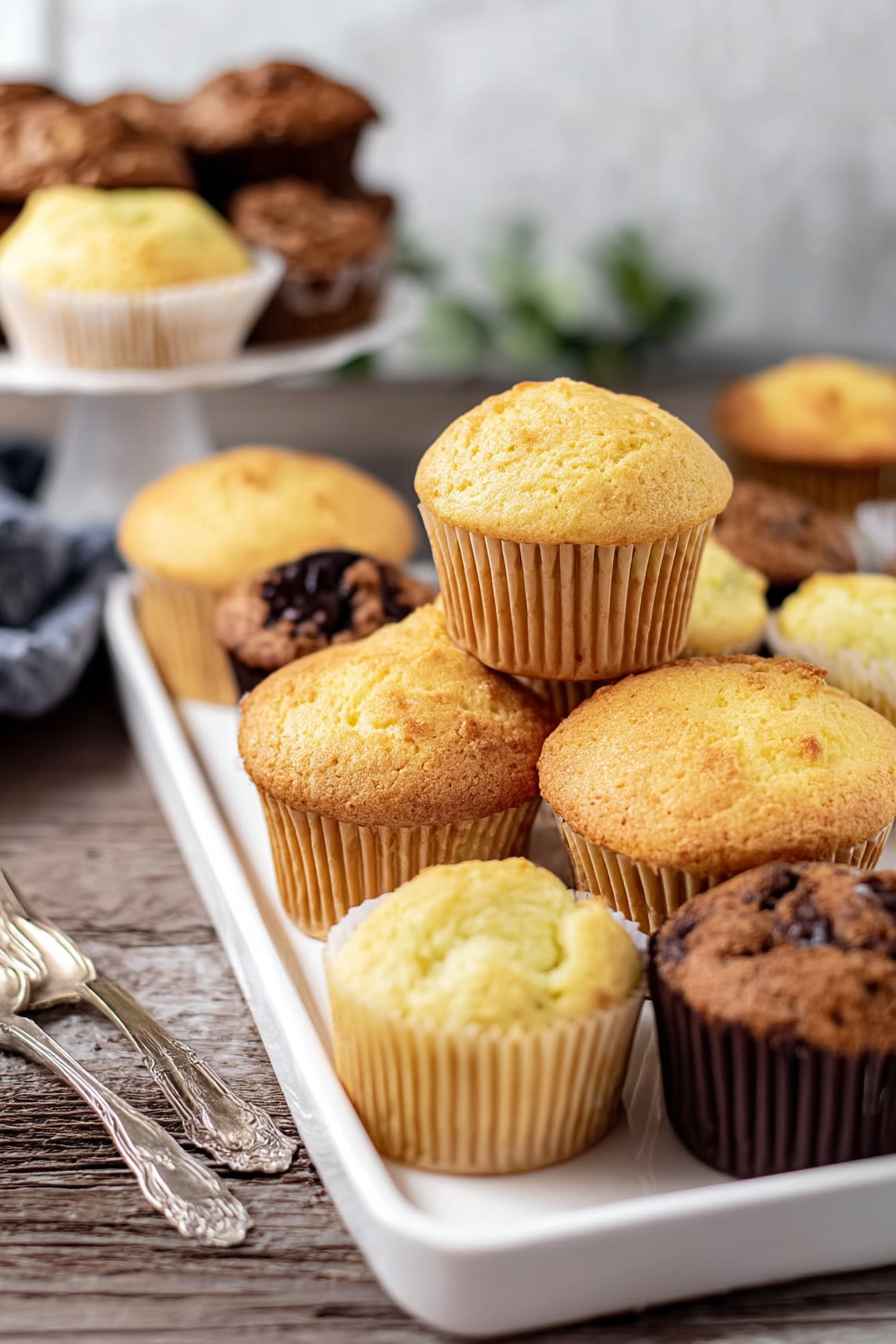
Great Topping Ideas
Don’t forget the tops. A little something extra sprinkled or placed on top before baking can add texture, flavor, and visual appeal.
- Streusel Topping: This is a classic for a reason. Combine half a cup of all purpose flour, one third cup of brown sugar, one teaspoon of cinnamon, and a quarter cup of cold butter that has been cut into small cubes. Use a pastry blender or your fingers to mix this together until it looks like coarse crumbs. Sprinkle a generous amount over the top of each muffin just before they go into the oven.
- Oats and Brown Sugar: A simple yet effective topping. Mix together a quarter cup of rolled oats with a quarter cup of brown sugar. Divide this mixture evenly and sprinkle it over the tops of your muffin batter.
- Chopped Nuts: For a simple crunchy topping, sprinkle a quarter to one third cup of finely chopped nuts over the muffins before they bake.
- Raw Sugar: A sprinkle of about one teaspoon of granulated sugar or large sugar crystals over each muffin before baking creates a wonderfully crunchy and sparkly crust on top.
- Fruit Slices: Thin slices of apples, pears, or a few whole berries can be arranged on top of each muffin before baking. This adds a lovely decorative touch and extra fruity flavor. Try using about two to three slices or berries per muffin cup.
Adjusting for Different Muffin Pan Sizes
This master recipe is perfectly calibrated for a standard 12 cup muffin pan. Following the recipe as written will give you exactly 12 standard sized muffins. However, you can easily adapt the batter and baking times for other pan sizes with these simple adjustments.
- Mini Muffins: If you are using a mini muffin pan, bake these smaller treats at a consistent 350 degrees Fahrenheit (177 degrees Celsius) for about 10 to 12 minutes. Mini muffins bake very quickly, so it is wise to start checking for doneness slightly earlier, perhaps around the 8 minute mark. This helps prevent them from drying out because of their smaller size and faster cooking time.
- Jumbo Muffin Pans: For larger, jumbo muffins, you will start with the initial high heat method. Bake them at 420 degrees Fahrenheit (215 degrees Celsius) for the first five to seven minutes. This initial burst gives them that beautiful rise. Then, reduce the heat to 350 degrees Fahrenheit (177 degrees Celsius) and continue baking for an additional 18 to 22 minutes. The total baking time will likely fall between 23 and 29 minutes. Remember that the exact time can vary depending on your oven and the temperature of your batter when it goes in.
- Texas Size Muffin Pans: These are even larger than jumbo muffins, typically measuring around three and a half inches in diameter or more. You will use the same two stage baking method as for jumbo muffins. Start by baking at 425 degrees Fahrenheit (218 degrees Celsius) for five to seven minutes to encourage a good lift. Then, lower the oven temperature to 350 degrees Fahrenheit (177 degrees Celsius) and continue baking for an additional 25 to 30 minutes. Depending on the size of your specific pan and how your oven bakes, the total time could extend up to 35 minutes.
Tips for Extra Fluffy Muffins
Following the step by step instructions provided should consistently result in wonderfully fluffy muffins. But if you want to take them to the next level and make them even lighter and airier, here is a helpful trick. Ensure that your key ingredients including the eggs, butter, and milk are all at room temperature before you start mixing the batter. Using room temperature ingredients helps them emulsify better and form a much smoother batter. This smoother batter is naturally more capable of trapping tiny air bubbles during the mixing process. When the batter then goes into the hot oven, those trapped air pockets expand rapidly, which really encourages your pastries to fluff up beautifully, yielding an exceptionally light texture.
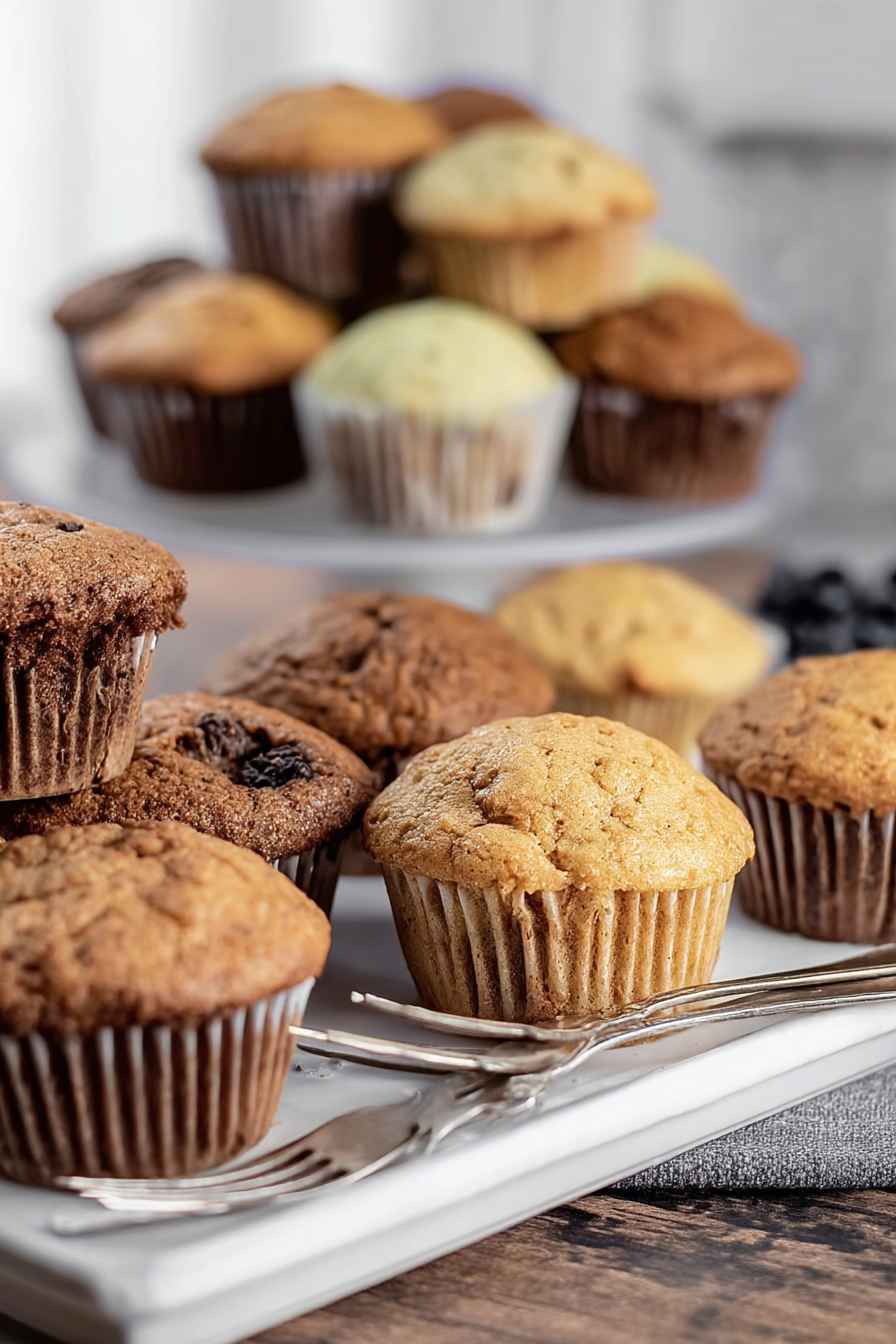
Storing and Freezing Your Muffins
Proper storage helps keep your muffins fresh and delicious for as long as possible.
To store muffins at room temperature, place them in an airtight container or a resealable plastic bag. They will keep well for up to three days. For an extra tip to help maintain their moisture and prevent them from drying out, you can place a paper towel at the bottom of the container before adding the muffins and another paper towel on top of the muffins before sealing.
If you want to save your muffins for longer, freezing is an excellent option. First, make sure the muffins have cooled completely after baking. Arrange them in a single layer on a baking sheet and place the sheet in the freezer for one to two hours until the muffins are firm. Once frozen solid, transfer the muffins to a resealable plastic freezer bag or an airtight container specifically designed for freezing. They can be stored in the freezer for up to three months. To thaw frozen muffins, simply leave them out at room temperature for about one to two hours, or you can transfer them to the refrigerator and let them thaw overnight.
Making Your Muffins Step by Step
Making a batch of these fantastic muffins is truly a breeze once you have your ingredients ready. The process is designed to be simple and forgiving, perfect for bakers of all skill levels. Here is a simple overview of the key steps involved in bringing this delicious recipe to life.
First things first, you will want to get your muffin pan prepared. Line each cup with paper liners. A little trick I like is to lightly spray the inside of the paper liners with a nonstick cooking spray. This extra step helps prevent the muffins from sticking later.
Next, you will cream together the softened butter and the sugar until the mixture becomes light and fluffy. This step incorporates air into the batter, contributing to the final texture.
Then, the eggs are added. Mix them in one at a time, ensuring each egg is fully incorporated before adding the next.
In a separate bowl, take a moment to whisk together all of your dry ingredients. This usually includes the flour, baking powder, and salt. Combining them beforehand helps ensure that the leavening and salt are evenly distributed throughout the batter.
Now, you will gradually add the dry ingredients and the milk to your butter mixture. You want to alternate between adding a portion of the dry ingredients and a portion of the milk. It is best to start and end with the dry ingredients. Mix just until you no longer see any dry streaks of flour. Be very careful at this stage not to overmix the batter. Overmixing is a common cause of tough muffins.
If you decided to include any delicious add-ins like fresh fruit, chocolate chips, nuts, or berries, this is the time to gently fold them into the batter using a rubber spatula.
Once the batter is ready, divide it evenly among the prepared muffin cups. Fill each cup about two thirds to three quarters full. This allows enough space for the muffins to rise nicely without overflowing.
Finally, the muffins are ready for baking. You will use the special two stage temperature method that is outlined in the recipe instructions. This involves starting the muffins in a very hot oven for a short period, then reducing the temperature to finish baking.
After baking, let the muffins cool in the pan for just a few minutes before transferring them to a wire rack. This allows them to set up slightly. Letting them cool completely on a wire rack ensures they do not become soggy.
Troubleshooting Common Muffin Issues
Even with a reliable recipe, sometimes things don’t turn out exactly as expected in the kitchen. Muffins are generally pretty cooperative, but if you run into any hiccups, here are some common problems and how you can usually solve them.
My muffins are tough. This is a very common issue and almost always comes from overmixing the batter. Once you add the dry ingredients, mix only until the streaks of flour disappear. Mixing beyond this point develops too much gluten, which leads to a tough, dense texture instead of a tender crumb.
My muffins baked flat or have no dome. If your muffins lack that classic domed top, there could be a couple of reasons. First, check the age of your baking powder. If it is old, it loses its leavening power. Make sure you are using fresh baking powder. Also, not starting the baking process with the high initial oven temperature can prevent a good rise. Ensure your oven is fully preheated to the specified high temperature before putting the muffins in.
My muffins sunk in the middle. Muffins that sink in the center after baking are often a sign that they were underbaked. Make sure you are baking them for the full recommended time and that a toothpick inserted into the center comes out clean with just a few moist crumbs attached, not wet batter. Another cause can be opening the oven door too early in the baking process. Try to resist peeking, especially during the first 10 to 15 minutes, as the sudden change in temperature can cause them to collapse.
My muffins are sticking to the paper liners. This can be frustrating. It sometimes happens if the liners are not prepped or if the muffins aren’t cooled properly. Lightly spraying the inside of the paper liners with nonstick cooking spray before filling them with batter can help a lot. Also, make sure you let the muffins cool in the pan for the recommended few minutes before trying to transfer them to a wire cooling rack. This allows them to firm up just enough.
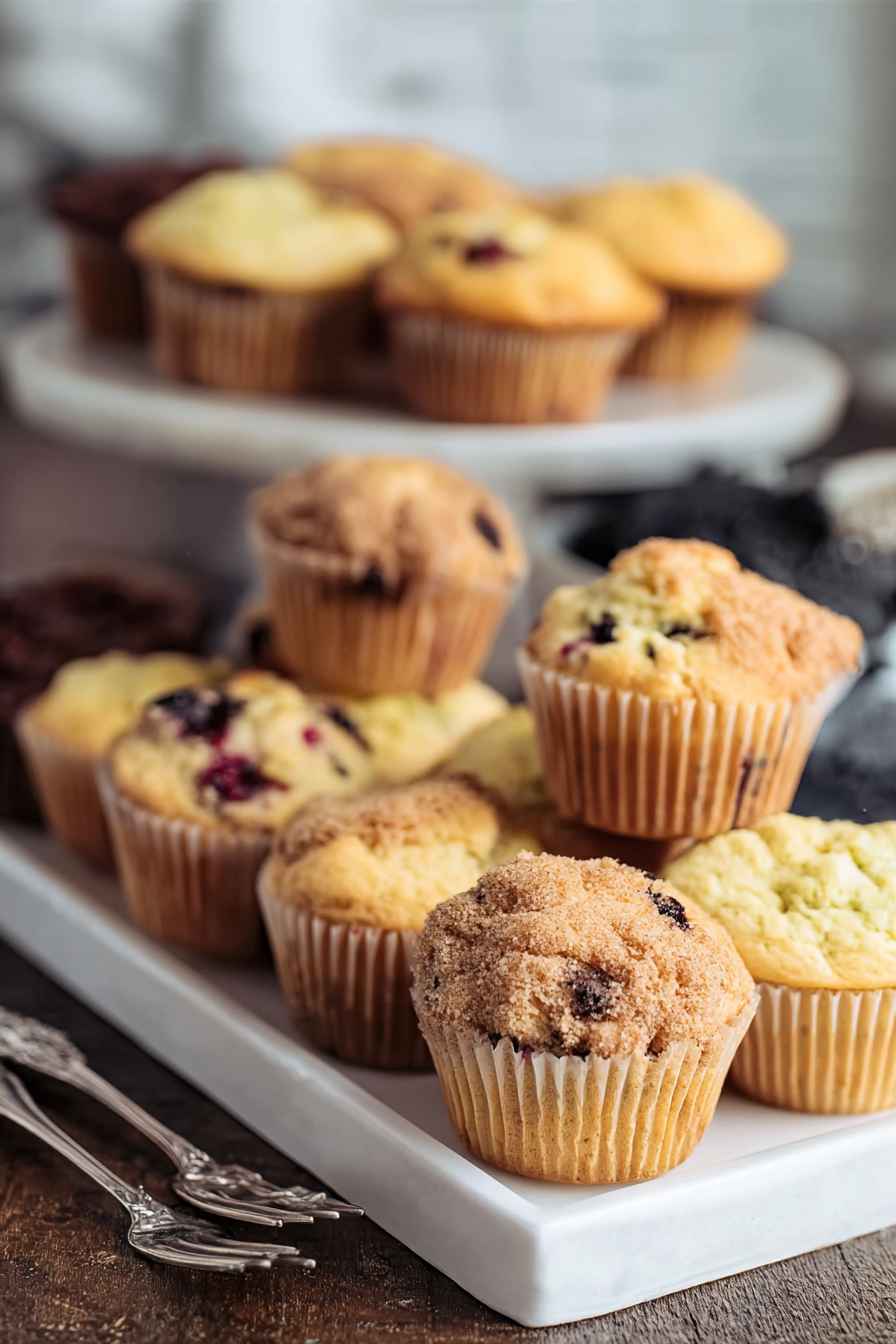
Frequently Asked Questions About Muffins
Here are answers to a few common questions people ask about baking and storing muffins.
Muffins stored properly in an airtight container at room temperature will stay fresh and delicious for about two to three days.
Yes, absolutely. Muffins are great for making ahead. You can bake a batch and store them for easy breakfasts or snacks throughout the week.
Storing them in an airtight container is key. You can also place a paper towel in the bottom of the container and another on top of the muffins before sealing. This helps absorb excess moisture and prevents the tops from becoming sticky while keeping the inside tender.
Yes, freezing is a great way to store muffins for longer. Let them cool completely, then freeze them in a single layer until firm before transferring to a freezer bag or container. They keep well for up to three months.
You can thaw frozen muffins at room temperature for an hour or two, or overnight in the refrigerator. To serve them warm, pop one in the microwave for 15 to 30 seconds or warm in a preheated oven at 350 degrees Fahrenheit (175 degrees Celsius) for about 5 to 10 minutes.
This recipe uses granulated sugar, and brown sugar is also suggested as a direct substitute for a richer flavor. Using other types of sugar like powdered sugar or liquid sweeteners would require adjustments to the recipe proportions and are not recommended without specific guidance.
Starting the muffins at a higher oven temperature creates a rapid burst of steam and activates the leavening agents quickly. This initial heat helps the batter rise rapidly and encourages the formation of that lovely domed top before the crust sets.
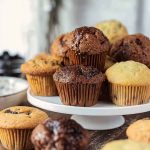
Your Go-To Master Muffin Recipe
- Prep Time: 20 minutes
- Cook Time: 22 minutes
- Total Time: 42 minutes
- Yield: 12 standard muffins
- Category: Muffins
- Method: Oven
Description
These Master Muffin Recipe muffins are incredibly versatile and simple to make, yielding fluffy treats perfect for adding your favorite flavors or mix-ins! You can create any kind of muffin you dream of with this reliable base recipe!
Ingredients
- ½ cup (120 grams) softened butter
- 1 cup (200 grams) granulated sugar or brown sugar
- 2 large eggs
- 2 teaspoons (8 grams) baking powder
- ½ teaspoon (3 grams) salt
- 1 teaspoon (5 ml) vanilla extract
- 2 cups (250 grams) all-purpose flour
- ½ cup (120 ml) milk or buttermilk
Instructions
- Prepare a standard 12-cup muffin pan. Line the cups with paper liners. Lightly spray the inside of the liners with nonstick cooking spray.
- Get a large mixing bowl. Use a hand mixer to beat the softened half cup butter and one cup granulated sugar together. Mix them until the mixture is smooth and creamy. This should take about two minutes.
- Add the two eggs and beat them in until they are just combined. This takes about 20 to 30 seconds. Add the two teaspoons baking powder, half teaspoon salt, one teaspoon vanilla extract, and any extra spices you want to use. Mix briefly just to combine the ingredients.
- Add one cup of the flour. Mix just until you see no dry streaks of flour. Then add the half cup milk or buttermilk. Stir this until it is combined. Scrape down the sides and the bottom of the bowl with a spatula. Now add the remaining one cup of flour. Mix again just until combined. Be careful not to mix the batter too much.
- If you are adding extra things like chocolate chips, berries, or nuts, use a rubber spatula to gently fold in one cup of these additions.
- Divide the muffin batter evenly among the 12 prepared muffin cups. Fill each cup about three quarters full. Let the batter rest in the cups while you heat the oven.
- Preheat the oven to 425 degrees Fahrenheit (220 degrees Celsius).
- Place the muffins in the hot oven and bake them for seven minutes. Do not open the oven door. Reduce the oven heat to 350 degrees Fahrenheit (175 degrees Celsius). Continue baking the muffins for an additional 13 to 15 minutes. Keep a close watch on them as the baking time might be slightly different depending on your specific oven.
- Let the baked muffins cool down inside the muffin pan for five minutes. After that, move them to a wire cooling rack so they can cool completely.
Notes
- Extracts: You can change the flavor by replacing the vanilla extract with other kinds. Use the same amount of extracts like almond extract, lemon extract, or orange extract.
- For making muffins taste like cinnamon or pumpkin spice, stir in one half to one teaspoon of ground cinnamon total.
- To give your muffins a citrus flavor, use citrus extracts and add up to two tablespoons of orange or lemon zest.
- For chocolate muffins, mix in half a cup of cocoa powder along with the sugar at the beginning.
- If you want pistachio muffins, swap out a quarter cup of the sugar for a small 34 ounce box of Instant Pistachio Pudding mix.
- For muffins with poppy seeds, stir in three tablespoons of poppy seeds into the batter.
- Add-ins: Your total amount of added ingredients should be up to one cup. You can mix and match from different options. Good choices include chocolate chips like milk, semi sweet, white, or mini ones. Fresh or frozen berries work well. Dried fruits such as cranberries or raisins are also good. Chopped nuts like walnuts, pecans, almonds, pistachios, or macadamias add a nice crunch.
- Streusel Topping: In a medium size bowl, combine half a cup of brown sugar, half a cup of all purpose flour, a quarter teaspoon of salt, and an optional quarter teaspoon of ground cinnamon. Use a pastry blender to cut four tablespoons of cold butter into this dry mixture. Keep cutting until it looks like small pebbles or coarse sand. Spoon this topping over the muffin batter just before you bake them.
- Other Toppings: You can sprinkle a quarter cup of oats mixed with a quarter cup of brown sugar on top. A quarter to one third cup of finely chopped nuts makes a good topping. You can sprinkle one teaspoon of granulated sugar or decorative sugar crystals on the tops. Thin slices of fruit can also be used to decorate before baking.
Nutrition
- Serving Size: 1 muffin
- Calories: 225kcal
- Sugar: 17g
- Sodium: 180mg
- Fat: 9g
- Carbohydrates: 33g
- Fiber: 1g
- Protein: 3g
- Cholesterol: 50mg

